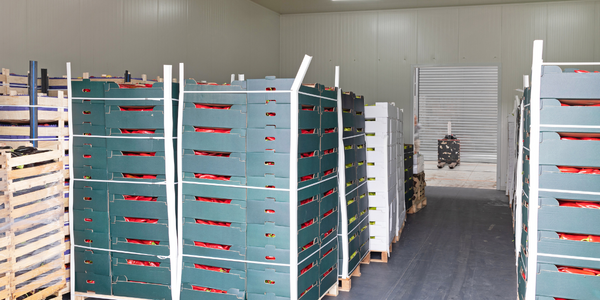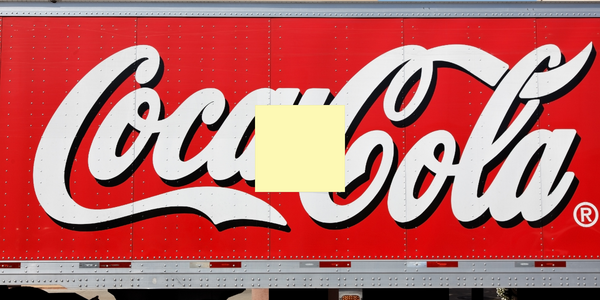Customer Company Size
Large Corporate
Region
- Europe
Country
- United Kingdom
- Germany
- Ireland
- Switzerland
Product
- Google Analytics 360
- Google Tag Manager 360
- Google BigQuery
Tech Stack
- Google Analytics
- Google Tag Manager
- Google BigQuery
Implementation Scale
- Enterprise-wide Deployment
Impact Metrics
- Revenue Growth
- Cost Savings
- Productivity Improvements
Technology Category
- Analytics & Modeling - Big Data Analytics
- Application Infrastructure & Middleware - API Integration & Management
- Platform as a Service (PaaS) - Data Management Platforms
Applicable Industries
- Food & Beverage
Applicable Functions
- Sales & Marketing
- Business Operation
Services
- Data Science Services
- System Integration
About The Customer
Domino's is the leading pizza delivery chain in the U.K. and the Republic of Ireland, and the master franchise in Germany and Switzerland. The company is known for its digital innovation, having made early investments in strong e-commerce and m-commerce platforms that help people purchase pizzas easily. Domino's sold its first pizza online in 1999 and has since launched apps for various platforms, including iPhone, Android, iPad, Windows, and Xbox. In the U.K. and Ireland, online sales are increasing 30% year over year and currently account for almost 70% of all sales, with 44% of those online sales made via mobile devices.
The Challenge
Domino's, a leading pizza delivery chain in the U.K., Republic of Ireland, Germany, and Switzerland, was facing challenges in integrating marketing measurement across devices and creating a holistic view of customer behavior. The company's success stemmed from early investments in strong e-commerce and m-commerce platforms that facilitated easy pizza purchases. However, the siloed analytics data from channel-focused tools restricted the team's ability to gain insights across all devices and channels. The team realized that valuable data insights were waiting just out of reach. To drive success, they knew they must break down silos, connect data sets, and gain efficient reporting for a more holistic and actionable view of customer behavior.
The Solution
Domino's partnered with DBi, a Google Analytics authorized reseller, to implement Google Analytics 360, Google Tag Manager 360, and Google BigQuery. DBi leveraged the power of the data layer, a repository of information written into the page code used to store and send information to Google Tag Manager 360. DBi deployed Tag Manager 360 across many Domino’s apps and websites, setting customized tags for all of the company’s e-commerce tracking and reporting needs. Domino's and DBi connected valuable data sets. DBi developed a custom solution using Google BigQuery to store and query Domino’s massive data sets in a fast, efficient, and affordable way. The BigQuery Export feature in Google Analytics 360 helped Domino’s automatically export raw data to a BigQuery project on a daily basis.
Operational Impact
Quantitative Benefit

Case Study missing?
Start adding your own!
Register with your work email and create a new case study profile for your business.
Related Case Studies.

Case Study
The Kellogg Company
Kellogg keeps a close eye on its trade spend, analyzing large volumes of data and running complex simulations to predict which promotional activities will be the most effective. Kellogg needed to decrease the trade spend but its traditional relational database on premises could not keep up with the pace of demand.

Case Study
HEINEKEN Uses the Cloud to Reach 10.5 Million Consumers
For 2012 campaign, the Bond promotion, it planned to launch the campaign at the same time everywhere on the planet. That created unprecedented challenges for HEINEKEN—nowhere more so than in its technology operation. The primary digital content for the campaign was a 100-megabyte movie that had to play flawlessly for millions of viewers worldwide. After all, Bond never fails. No one was going to tolerate a technology failure that might bruise his brand.Previously, HEINEKEN had supported digital media at its outsourced datacenter. But that datacenter lacked the computing resources HEINEKEN needed, and building them—especially to support peak traffic that would total millions of simultaneous hits—would have been both time-consuming and expensive. Nor would it have provided the geographic reach that HEINEKEN needed to minimize latency worldwide.

Case Study
Energy Management System at Sugar Industry
The company wanted to use the information from the system to claim under the renewable energy certificate scheme. The benefit to the company under the renewable energy certificates is Rs 75 million a year. To enable the above, an end-to-end solution for load monitoring, consumption monitoring, online data monitoring, automatic meter data acquisition which can be exported to SAP and other applications is required.

Case Study
Coca Cola Swaziland Conco Case Study
Coco Cola Swaziland, South Africa would like to find a solution that would enable the following results: - Reduce energy consumption by 20% in one year. - Formulate a series of strategic initiatives that would enlist the commitment of corporate management and create employee awareness while helping meet departmental targets and investing in tools that assist with energy management. - Formulate a series of tactical initiatives that would optimize energy usage on the shop floor. These would include charging forklifts and running cold rooms only during off-peak periods, running the dust extractors only during working hours and basing lights and air-conditioning on someone’s presence. - Increase visibility into the factory and other processes. - Enable limited, non-intrusive control functions for certain processes.

Case Study
Temperature Monitoring for Restaurant Food Storage
When it came to implementing a solution, Mr. Nesbitt had an idea of what functionality that he wanted. Although not mandated by Health Canada, Mr. Nesbitt wanted to ensure quality control issues met the highest possible standards as part of his commitment to top-of-class food services. This wish list included an easy-to use temperature-monitoring system that could provide a visible display of the temperatures of all of his refrigerators and freezers, including historical information so that he could review the performance of his equipment. It also had to provide alert notification (but email alerts and SMS text message alerts) to alert key staff in the event that a cooling system was exceeding pre-set warning limits.

Case Study
Coca-Cola Refreshments, U.S.
Coca-Cola Refreshments owns and manages Coca-Cola branded refrigerators in retail establishments. Legacy systems were used to locate equipment information by logging onto multiple servers which took up to 8 hours to update information on 30-40 units. The company had no overall visibility into equipment status or maintenance history.







